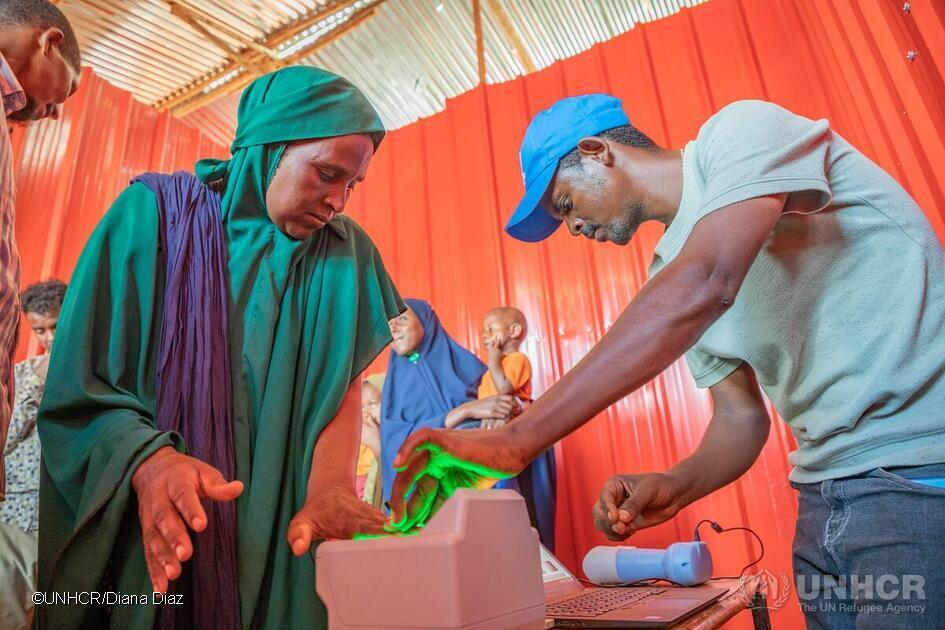
By Ryo Inoue
In 2002, UNHCR introduced biometrics, and leveraged the technology to manage the identity of the people it serves effectively. By capturing up to 10 fingerprints, 2 irises and a face photo during the initial encounter, biometrics play a crucial role from confirming an individual’s physical presence to providing assistance. UNHCR’s Biometric Identity Management System (BIMS) serves a diverse user base including UNHCR staff, partners, governments, and soon refugees themselves through self-service applications, all in a user-friendly manner. While BIMS has undergone countless improvements throughout the years, the biometric scanner devices used have remained largely unchanged.
The requirements for BIMS have evolved significantly, with a growing need for more lightweight scanner devices. This shift is not only due to the current bulky scanners posing logistical challenges, but also because it opens up opportunities to enhance the usability of BIMS across a wider range of operational settings. By making the application mobile-friendly and compatible with smartphones and tablets, we can significantly improve the user experience. Looking ahead, UNHCR plans to establish unattended kiosks for self-service, allowing refugees to verify their biometrics and access services tailored to their needs. A key aspect of this plan is the potential for a more lightweight biometric device to be used in standalone kiosks, further enhancing the project’s reach and impact.
In response to this changing landscape, UNHCR initiated a project to procure new biometric scanner devices. First, this involved the launching of a Request for Information (RFI) in late 2023 to gather the latest information on the available devices on the market. Then a series of tests was carried out to assess the suitability of various scanners, leading to the selection of several models for procurement. Importantly, the project’s aim was not only to expand the usability of BIMS for mobile scenarios and self-service, but also to prioritize and enhance the user experience of existing scenarios.
The scanner testing was done by completing a desk review and collecting sample products from several hardware vendors, evaluating them against specific criteria, and finally selecting some products that scored well against UNHCR’s needs. The type of sample products ranged from iris and fingerprint scanners to embedded all-in-one devices. The evaluation metrics involved portability (size and weight), performance in harsh environmental conditions, capture speed, image quality, built-in validation features, ease of software integration with BIMS, and overall user experience. Special attention was given to several usage scenarios, e.g., resistance to heat, dust, and bright sunlight, especially for outdoor usage; battery life of mobile scanners when used with smartphones or tablets; effectiveness of fake finger detection for unattended standalone kiosks to prevent fraud attempts.
Based on testing outcomes, UNHCR has now standardized several new scanner products. The organization will then proceed with a competitive Invitation to Bid (ITB) process to select the supplier(s) for these models. In parallel, the development and testing of a BIMS mobile app that runs on Android devices is making significant progress. The conceptualization of standalone kiosks for self-service is also in progress. Once the software and the procurement activity for biometric scanners converge, they will pave the way for the next generation of BIMS solutions. These advancements should not only enhance the efficiency and reach of the operations using BIMS but also ensure the security, privacy, and dignity of the individuals UNHCR serves.
